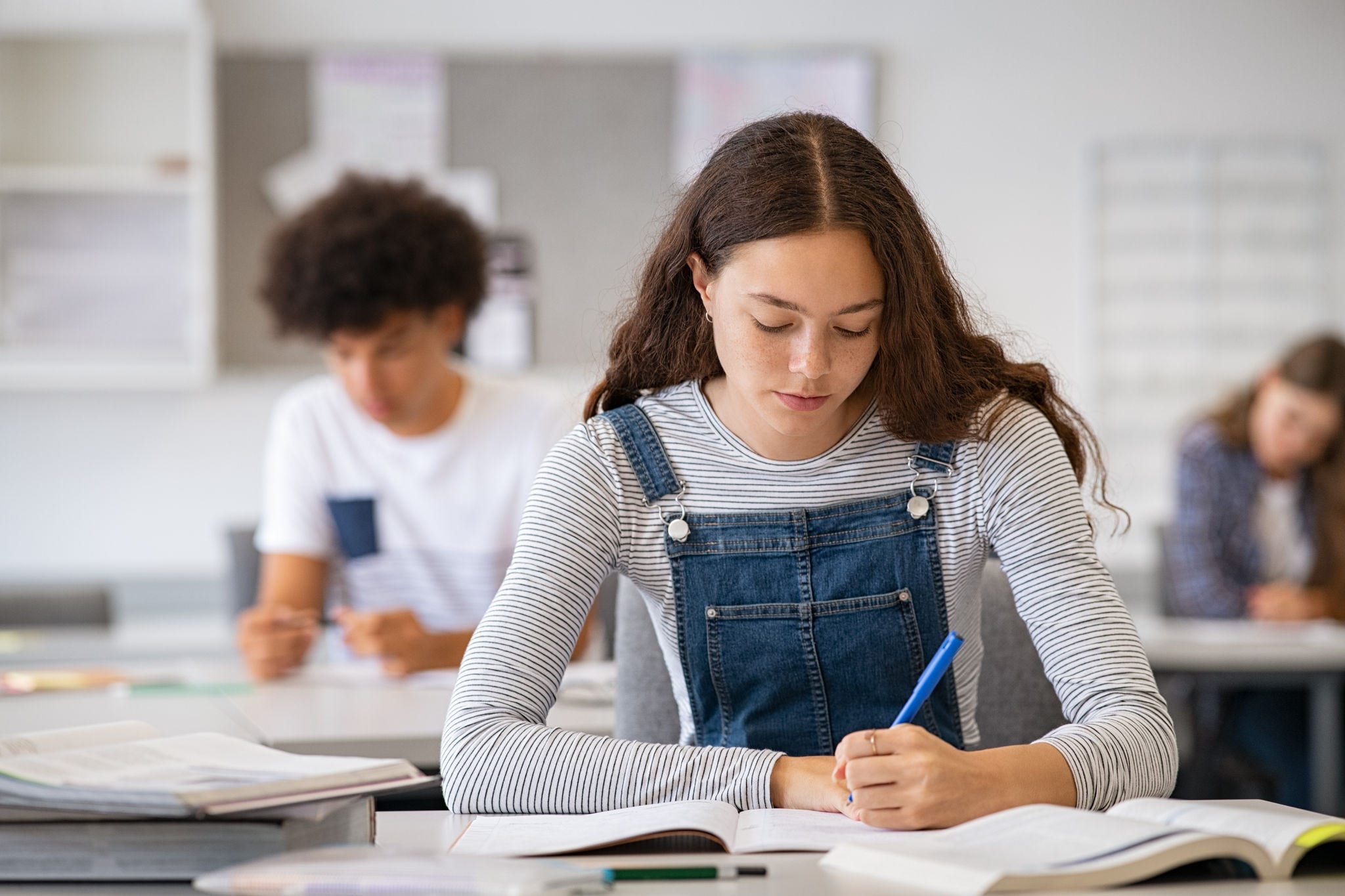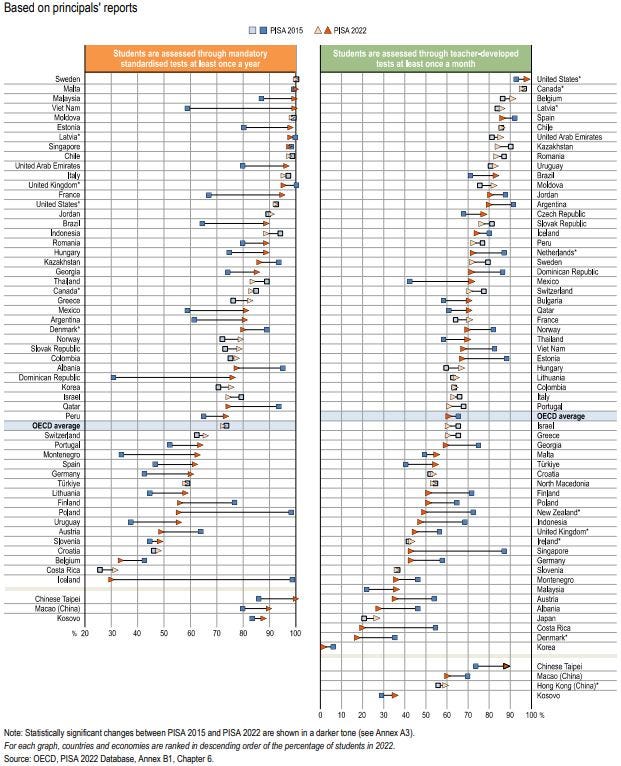At the centre of an effective policy framework for student assessment is the expectation that assessment supports student learning. This requires clear and widely understood national learning objectives against which students’ level and progress are assessed. Common expected learning outcomes are usually defined by grade or competency level and can be set out as part of national learning standards or integrated into national curriculum frameworks.
Student assessment
Student assessment helps focus attention on what matters most in education: the learning progress and outcomes of each student. The primary purposes of student assessment are to determine what students know and can do, and to help students advance in their learning and make informed decisions on their next steps.

Key messages
Both formative and summative assessments should be well embedded within broader assessment frameworks. While summative assessment is important for recording or certifying learning at key stages of the education process, it is the daily engagements of teachers and students with assessment information that will lead to sustainable improvements in learning outcomes. Formative assessment provides teachers with information on aspects of learning as they are still developing to shape instruction and support students’ further learning.
To ensure a broad approach to student assessment, education systems can provide a range of nationally validated assessments and build teacher capacity to develop their own assessments that respond to classroom needs. While external assessments can help clarify learning expectations for all schools, an overreliance on such instruments can distort the education process to focus only on what is being assessed in the test. Teacher-developed instruments are embedded in regular coursework and can capture competencies that are difficult to measure in standardized (external) assessment.
Context
Assessments in lower secondary education serve different purposes
Of the 32 OECD and partner countries which conduct at least one national/central assessment at the lower secondary level, about three-quarters reported making moderate or high levels of use of them for formative purposes, and about two-fifths reported doing so for summative purposes. Many countries use such assessments to inform teachers, students and parents about student knowledge in assessed subject areas. Some countries use them to monitor the education system at the school and/or the system level.
Main purposes of national/central assessments in lower secondary education (2023)
Most 15-year-old students are assessed with mandatory standardised tests
On average across OECD countries, six in ten students attended schools whose principal reported that mandatory standardised tests are used once or twice a year and the same share of students attended a school where teacher-developed tests and teachers’ judgemental ratings are used at least once a month. On average across OECD countries, the use of teacher-developed tests and teachers’ judgemental ratings to assess student progress decreased moderately between 2015 and 2022, but the use of standardised tests remained stable.
Trends in the frequency of using standardised and teacher-developed tests (2022)

Related publications
Programmes and projects
-
PISA is the OECD's Programme for International Student Assessment. PISA measures 15-year-olds’ ability to use their reading, mathematics and science knowledge and skills to meet real-life challenges.Learn more
-
The Research, Development and Innovation (RDI) programme established by the PISA Governing Board in 2018 explores how different areas of the assessment programme (e.g. test design, scoring methodologies) can be improved.Learn more
-
The OECD Indicators of Education Systems (INES) programme seeks to gauge the performance of national education systems through internationally comparable data.Learn more
-
Artificial Intelligence (AI) and robotics are becoming increasingly sophisticated at replicating human skills. The evolution of these technologies could fundamentally transform work over coming decades and deeply affect education’s current role in providing skills and preparing learners for future work.Learn more
-
The Education Policy Outlook is an analytical observatory that monitors the evolution of policy priorities and policy developments from early childhood education to adult education, mainly among OECD education systems, to provide a comparative understanding of how policies are evolving, and how they can be best implemented or improved over time.Learn more
-
The OECD’s programme on education and skills policy support policymakers in their efforts to achieve high-quality lifelong learning, which in turn contributes to personal development, sustainable economic growth, and social cohesion.Learn more
-
Education for Inclusive Societies Project is designed to respond to the increasing diversity that characterises education systems, and seeks to help governments and relevant stakeholders achieve more equitable and inclusive education systems as a pillar to create more inclusive societies.Learn more
-
Add a short description – maximum 200 characters (4 lines). This should outline the OECD’s mandate and the main issues/challenges with respect to the project. Writing style and tone should be clear, to the point, and jargon-free.Learn more
-
The OECD’s PISA High Performing Systems for Tomorrow (HPST) project aims to establish a comprehensive international framework for the future development of education systems, enabling countries to reorient their education systems toward new purposes, policies and practices, while considering the implications of artificial intelligence for the purposes of education.Learn more
-
Since 2013, the OECD has gathered evidence on how school resource policies work in different contexts. The focus is now on digital resources to enable countries to learn from each other in the digital transformation of their education.Learn more
-
Large-scale assessments of social and emotional skills mainly use students’ self-assessments, which have some flaws in terms of comparability and, to some extend, validity and interpretability. Smaller studies are trialling more direct assessments of these skills. Work is needed to translate the innovations made in these trials and test them on larger, international scales. » A better understanding of social and emotional skills will lead to better inclusion of these skills in education.Learn more
-
Meeting the challenges of the 21st Century means that schools must be empowered to play a more central and active role in leading improvements in education. To support this, Schools+ will bring together major education networks to put schools at the centre of education design.Learn more
-
Data and digital technologies are among the most powerful drivers of innovation in education, offering a broad range of opportunities for system and school management, as well as for teaching and learning. But they also create new policy issues as countries face challenges to reap the benefits of digitalisation in education while minimising its risks.Learn more
-
The OECD Survey on Social and Emotional Skills is an international survey that identifies and assesses the conditions and practices that foster or hinder the development of social and emotional skills for 10- and 15-year-old students.Learn more
-
Creativity and critical thinking prepare students for innovative economies and improve wellbeing. However, educators often lack guidance on how to equip students with creativity and critical thinking within subject teaching. Education systems have likewise rarely established ways to systematically assess students’ acquisition of creativity and critical thinking.Learn more






